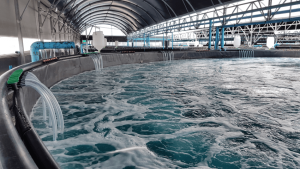
Sustainability in Aquaculture: The Importance of Finding Alternative Sources of Feed
Sustainability in Aquaculture: The Importance of Finding Alternative Sources of Feed
Aquaculture, the farming of fish, crustaceans, mollusks, and aquatic plants, has become an increasingly vital part of the global food system. With the demand for seafood rising, aquaculture provides a means to meet this demand sustainably. However, the environmental impact of aquaculture, particularly its reliance on traditional fish meal and fish oil, poses significant challenges. To address these challenges, the search for alternative sources of feed has become crucial for the sustainability and future of aquaculture.
Environmental Challenges of Traditional Aquaculture Feed
Traditional aquaculture feed, primarily fish meal and fish oil derived from wild-caught fish like anchovies, sardines, and mackerel, raises several environmental concerns:
Overfishing and Depletion of Marine Resources: The extraction of fish for fish meal and oil can deplete wild fish populations, disrupting marine ecosystems and affecting the livelihoods of fishing communities.
Carbon Footprint: The production and transportation of fish meal and oil contribute to greenhouse gas emissions, exacerbating climate change.
Waste and Pollution: Excess nutrients and waste from aquaculture operations, including uneaten feed and feces, can pollute water bodies and harm aquatic ecosystems.
The Need for Alternative Feed Sources
To mitigate these environmental impacts, aquaculture industries are increasingly turning to alternative sources of feed:
Plant-Based Feeds: Utilizing plant proteins and oils from soybeans, corn, and other crops reduces the demand for fish meal and oil, lowering the environmental footprint of aquaculture.
Insect Meal: Insects like Black Soldier Fly (BSF) larvae and mealworms can be grown on organic waste and are rich in protein, making them a sustainable alternative to fish meal.
Single-Cell Proteins: Microorganisms like algae and bacteria can be cultivated to produce high-protein biomass suitable for fish feed.
By-Products: Processing waste from the food and agriculture industries, such as agricultural residues and by-products, can be repurposed into nutritious feed ingredients.
Benefits of Alternative Feed Sources
1. Sustainability: Alternative feed sources reduce pressure on wild fish stocks and contribute to the circular economy by repurposing waste materials.
2. Nutritional Quality: Many alternative feed sources are rich in proteins, essential amino acids, and micronutrients, promoting the health and growth of farmed fish.
3. Cost-Effectiveness: Producing feed from alternative sources can be economically viable, especially in regions where traditional fish meal and oil are expensive or scarce.
4. Reduced Environmental Impact: By lowering greenhouse gas emissions, conserving marine resources, and reducing pollution, alternative feed sources support more sustainable aquaculture practices.
Role of the Fujairah Research Centre in Promoting Sustainability
Located in the United Arab Emirates, the Fujairah Research Centre plays a pivotal role in advancing sustainable aquaculture practices:
Research and Innovation: The centre conducts cutting-edge research on alternative aquaculture feed sources, including Black Soldier Fly larvae and other sustainable protein sources.
Technology Development: Researchers at the centre are developing technologies to optimize the production and nutritional value of alternative feeds, ensuring they meet the dietary needs of farmed fish.
Environmental Impact Assessment: The centre assesses the environmental impact of aquaculture practices and develops mitigation strategies to minimize pollution and resource depletion.
Education and Outreach: Through workshops, seminars, and educational programs, the centre raises awareness about sustainable aquaculture practices among stakeholders, including farmers, policymakers, and the public.
Case Study: Black Soldier Fly (BSF) Larvae as Feed
Black Soldier Fly (BSF) larvae are emerging as a promising alternative feed ingredient in aquaculture:
Rearing Process: BSF larvae can be reared on organic waste, reducing the environmental burden of waste disposal.
Nutritional Value: BSF larvae are rich in protein, essential amino acids, and fats, making them an ideal feed source for fish.
Circular Economy: By converting waste into high-value protein, BSF larvae contribute to a sustainable and efficient food production system.
Future Directions
As the aquaculture industry continues to grow, research and innovation in alternative feed sources will play a critical role in enhancing sustainability:
Technological Advancements: Developments in biotechnology, including genetic engineering and fermentation, can improve the nutritional quality and efficiency of alternative feeds.
Regulatory Support: Governments and regulatory bodies can support the adoption of alternative feed sources through incentives, policies, and standards.
Industry Collaboration: Collaboration between researchers, farmers, and feed manufacturers can accelerate the development and adoption of sustainable feed solutions.
Conclusion
Sustainability in aquaculture hinges on finding alternative sources of feed that reduce environmental impact, conserve marine resources, and promote economic viability. By embracing innovative solutions like plant-based feeds, insect meal, and single-cell proteins, the aquaculture industry can meet the growing global demand for seafood while safeguarding the health of our oceans and planet.
As consumers, policymakers, and industry leaders, we all have a role to play in supporting sustainable aquaculture practices and ensuring a healthy and resilient food system for future generations.
